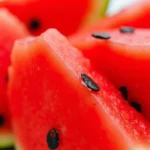You’ve got your melting wafers ready, your favorite toppings prepped, and a vision of colorful, delicious almond bark dancing in your head. But can you add food coloring to almond bark to make that vision a reality? The answer is a resounding yes!
While almond bark is inherently beautiful in its classic ivory hue, adding a touch of color opens a world of creative possibilities. Whether you’re aiming for vibrant swirls, delicate pastels, or bold, solid shades, food coloring is your secret weapon for transforming ordinary almond bark into edible masterpieces.
Choosing the Right Food Coloring for Almond Bark
Not all food colorings are created equal, especially when it comes to almond bark. Here’s what you need to know:
-
Liquid Food Coloring: This pantry staple is readily available and works well for achieving lighter shades. However, adding too much liquid can affect the bark’s texture, making it softer and more prone to sticking.
-
Gel Food Coloring: A little goes a long way with gel food coloring, making it ideal for vibrant colors and intricate designs. Its concentrated formula minimizes the risk of altering the bark’s consistency.
-
Powdered Food Coloring: While less common, powdered food coloring offers intense hues and is perfect for achieving deep, rich tones. Be sure to mix it thoroughly to avoid any specks of color in your finished bark.
Tips for Coloring Almond Bark Like a Pro
Ready to unleash your inner artist? Follow these expert tips to achieve picture-perfect results:
-
Start Small: Add food coloring gradually, a drop or a tiny dab at a time, until you reach your desired shade. It’s easier to add more color than to lighten an overly saturated batch.
-
Mix Thoroughly: Ensure the food coloring is fully incorporated into the melted almond bark to avoid streaks or uneven coloring.
-
Temperature Matters: For optimal consistency, let the melted almond bark cool slightly before adding the food coloring. This helps prevent the color from separating or becoming blotchy.
-
Get Creative with Techniques: Don’t be afraid to experiment with different techniques. Use toothpicks to create swirls, marble effects, or even intricate patterns.
Frequently Asked Questions
Can I use natural food coloring for almond bark?
Absolutely! Natural food colorings derived from fruits, vegetables, and spices can add subtle hues to your almond bark. Keep in mind that the colors might not be as vibrant as those achieved with artificial food coloring.
How do I prevent the food coloring from bleeding into the toppings?
Allow the colored almond bark to set slightly before adding toppings. This will create a barrier and minimize the chance of colors mixing.
Can I layer different colors of almond bark?
Yes! Pour each color separately, allowing each layer to set completely before adding the next. This technique creates a stunning layered effect.
My almond bark is too thick after adding food coloring. What should I do?
If the almond bark becomes too thick, gently reheat it in the microwave in short bursts, stirring between each interval until you achieve the desired consistency.
Can I freeze colored almond bark?
Yes, you can freeze colored almond bark for later use. Wrap it tightly in plastic wrap and store it in an airtight container for up to 2 months.
Conclusion
Adding food coloring to almond bark is a simple yet effective way to elevate your sweet creations. With a bit of creativity and these helpful tips, you’ll be crafting colorful and delicious treats in no time!
For personalized color guidance and expert tips on creating stunning edible masterpieces, contact us at Phone Number: 0373298888, Email: SEO.backlink@gmail.com, or visit us at 86 Cầu Giấy, Hà Nội. Our team is available 24/7 to assist you.
